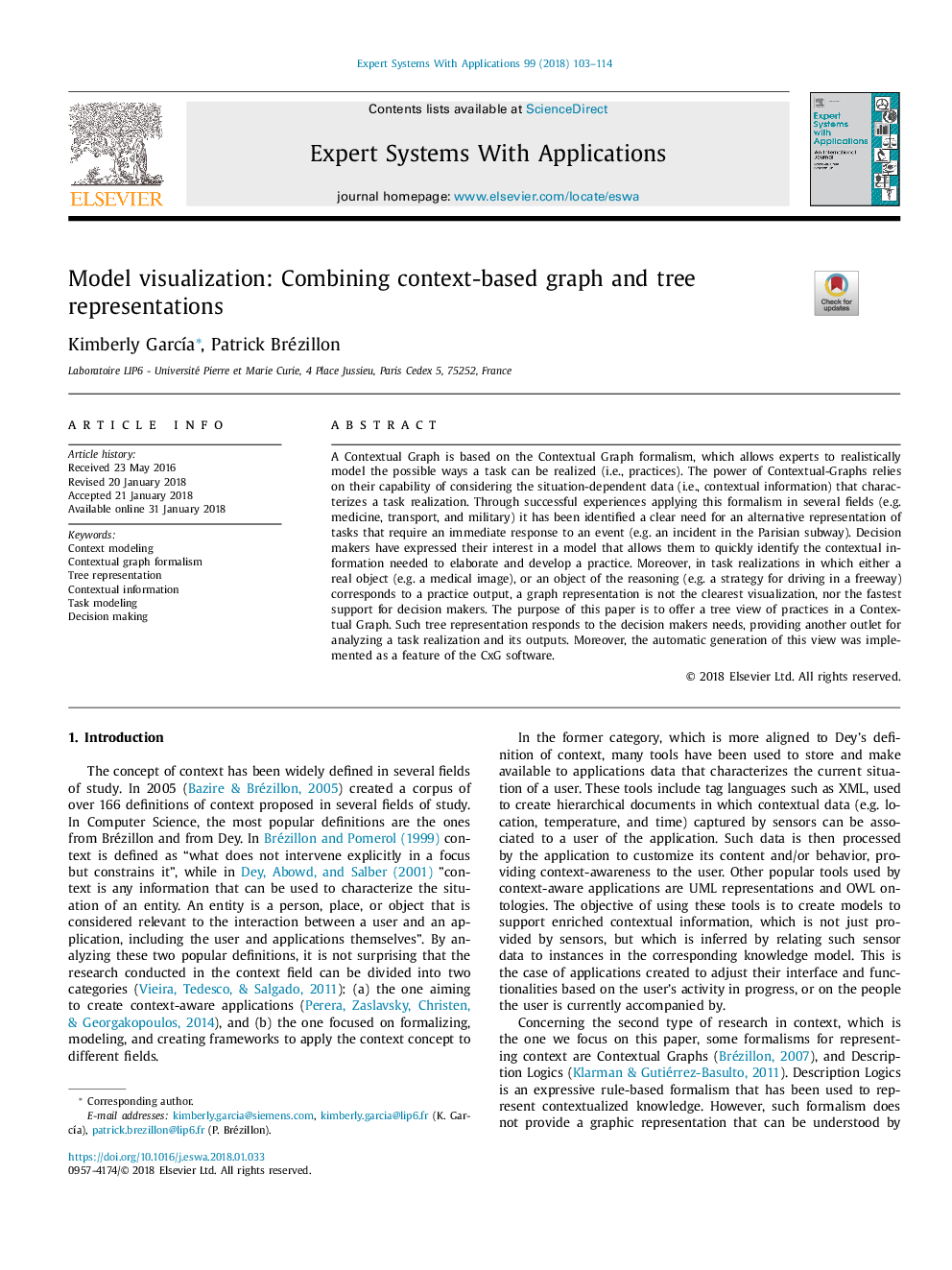| Article ID | Journal | Published Year | Pages | File Type |
|---|---|---|---|---|
| 6855135 | Expert Systems with Applications | 2018 | 12 Pages |
Abstract
A Contextual Graph is based on the Contextual Graph formalism, which allows experts to realistically model the possible ways a task can be realized (i.e., practices). The power of Contextual-Graphs relies on their capability of considering the situation-dependent data (i.e., contextual information) that characterizes a task realization. Through successful experiences applying this formalism in several fields (e.g. medicine, transport, and military) it has been identified a clear need for an alternative representation of tasks that require an immediate response to an event (e.g. an incident in the Parisian subway). Decision makers have expressed their interest in a model that allows them to quickly identify the contextual information needed to elaborate and develop a practice. Moreover, in task realizations in which either a real object (e.g. a medical image), or an object of the reasoning (e.g. a strategy for driving in a freeway) corresponds to a practice output, a graph representation is not the clearest visualization, nor the fastest support for decision makers. The purpose of this paper is to offer a tree view of practices in a Contextual Graph. Such tree representation responds to the decision makers needs, providing another outlet for analyzing a task realization and its outputs. Moreover, the automatic generation of this view was implemented as a feature of the CxG software.
Related Topics
Physical Sciences and Engineering
Computer Science
Artificial Intelligence
Authors
Kimberly GarcÃa, Patrick Brézillon,
